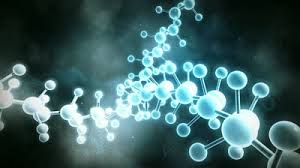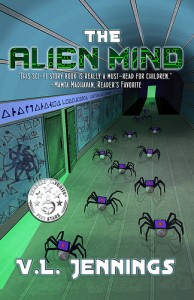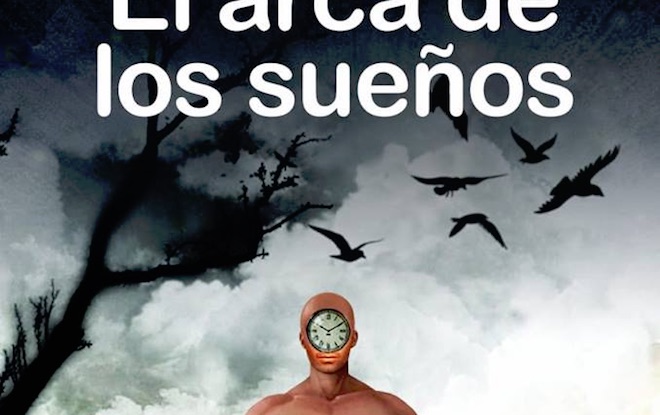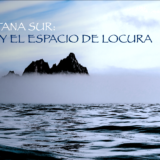 I asked Virginia Lori Jennings, author of middle grade science fiction if she would give us a look into the mind of a SF author. How does one create a story, or a world based on science as opposed to any other kind of world? Here is what she gave me.
I asked Virginia Lori Jennings, author of middle grade science fiction if she would give us a look into the mind of a SF author. How does one create a story, or a world based on science as opposed to any other kind of world? Here is what she gave me.
At the heart of science is the ability to speculate about, well pretty much anything, as well as the ability to pull together a hypothesis that tries to answer that question. Yes, in science, there are the necessary experiments and tests to prove a hypothesis but it is the same speculation and the ability to hypothesize that science fiction writers thrive on! For this piece, consider how one might heal someone if you could move things at a molecular level…
“Sorry I’ve been so long, Rivi; I tripped and scraped my knee. I had to go back and clean up,” Dan said, as he walked over to Rivi and sat in the chair next to her.
“Let me see,” she said, getting up from her chair and then kneeling at his feet.
“I’ll send for a first-aid kit,” the President said, standing and signaling one of his men standing idly on one side of the room.
“There’s no need, Mr. President,” Rivi answered quietly. “I can handle this. Dan’s already done a pretty good job of cleaning this out.”
Rivi lifted her hand and held it palm down above Daniel’s knee. She then closed her eyes and focused on the shallow scrape.
President Malcarosi watched with confusion as the skin on Daniel’s knee started to knit itself back together. Amazed even further, Malcarosi watched as every sign of the cut seemed to vanish. Not even a scar was left.
Rivi opened her eyes and sat back on her feet. She rolled her head to stretch her tired neck, closed her eyes once more at a small moment of dizziness, and noted humorously to herself that Comp Amalgamators should stick to computers. She smiled and looked back up at Dan as she waved her hand over the torn fabric of his Akat. Daniel looked slightly embarrassed.
“No harm done,” Rivi replied, smiling as she united the atoms in the torn fabric once more.
“How did you…?” the President asked, backing away slightly as Rivi stood and returned to her seat beside Dan.
Rivi hesitated and looked over at Dan, who met her gaze, and then turned to respond to the President’s question for Rivi.
“Rivi, along with the other children, has learned quite a bit. They are … different,” Daniel said.
The science for this one is simple, all objects are made of tiny atoms bonded together like a puzzle.
 Billions of sugar molecules stacked together form a sugar crystal. Tons of sugar crystals packed together form a sugar cube, or separated they just stay loose sugar. If you could control atoms at the molecular level and stack them together in the right order then you could repair anything. When healing someone this would involve removing any atoms that shouldn’t be there, like dirt or other foreign objects. Then you would need to re-stack the atoms of the flesh, and in this case also the clothing, in order to repair the damage.
Billions of sugar molecules stacked together form a sugar crystal. Tons of sugar crystals packed together form a sugar cube, or separated they just stay loose sugar. If you could control atoms at the molecular level and stack them together in the right order then you could repair anything. When healing someone this would involve removing any atoms that shouldn’t be there, like dirt or other foreign objects. Then you would need to re-stack the atoms of the flesh, and in this case also the clothing, in order to repair the damage.
Consider the sugar cube dissolved in water. It is still sugar but it is being pulled apart by the water, just like something pulled apart Daniel’s knee when he fell. If we could separate the sugar from the water, the sugar’s natural attraction to its own molecules would enable it to stick together. It might not be as strong as it originally was before it got wet no… and why? Because it wasn’t stacked in the same order, into the same shape. Just like a rock wall stacked one way might be strong but stacked another way might fall down just by the force of gravity.
So in this case we will remove the extra blood plasma, white blood cells, and red blood cells from between the molecules that are supposed to form the blood vessel walls, muscles, and skin. Send the blood back through the veins, re-stack the molecules of the vein walls back into their proper shape and continue doing the same all the way on up and out to the surface of the body.
The reason why we use stitches in today’s world is because we can’t control molecules that small. We can’t put them back where they originally came from. Its like putting together a puzzle with half the pieces messed up; it won’t work. We have to use thread to hold the pieces together until our body’s healing process fills in the gaps. If we could manipulate molecules there would be no gaps, no missing pieces.
Well- unless something ate your thumb and you never found it again. That might be a bit harder to come back from.
About Virginia Lori Jennings
What motivates Virginia to create, to illustrate, to prognosticate? Virginia is a speculator, the kind of person who always debates the “what if?” of where stories both true and fantastical are leading themselves to, which explains her love of post-apocalyptic fare such as “The Walking Dead.” Through her writing, she enjoys trying to figure out what our human potential is, and where our innate desire for a better world could lead us.
Virginia’s two middle-grade SF books will be released this fall. Alien Mind and Visionary From the Stars. Visit her website to find out more!











Recent Comments